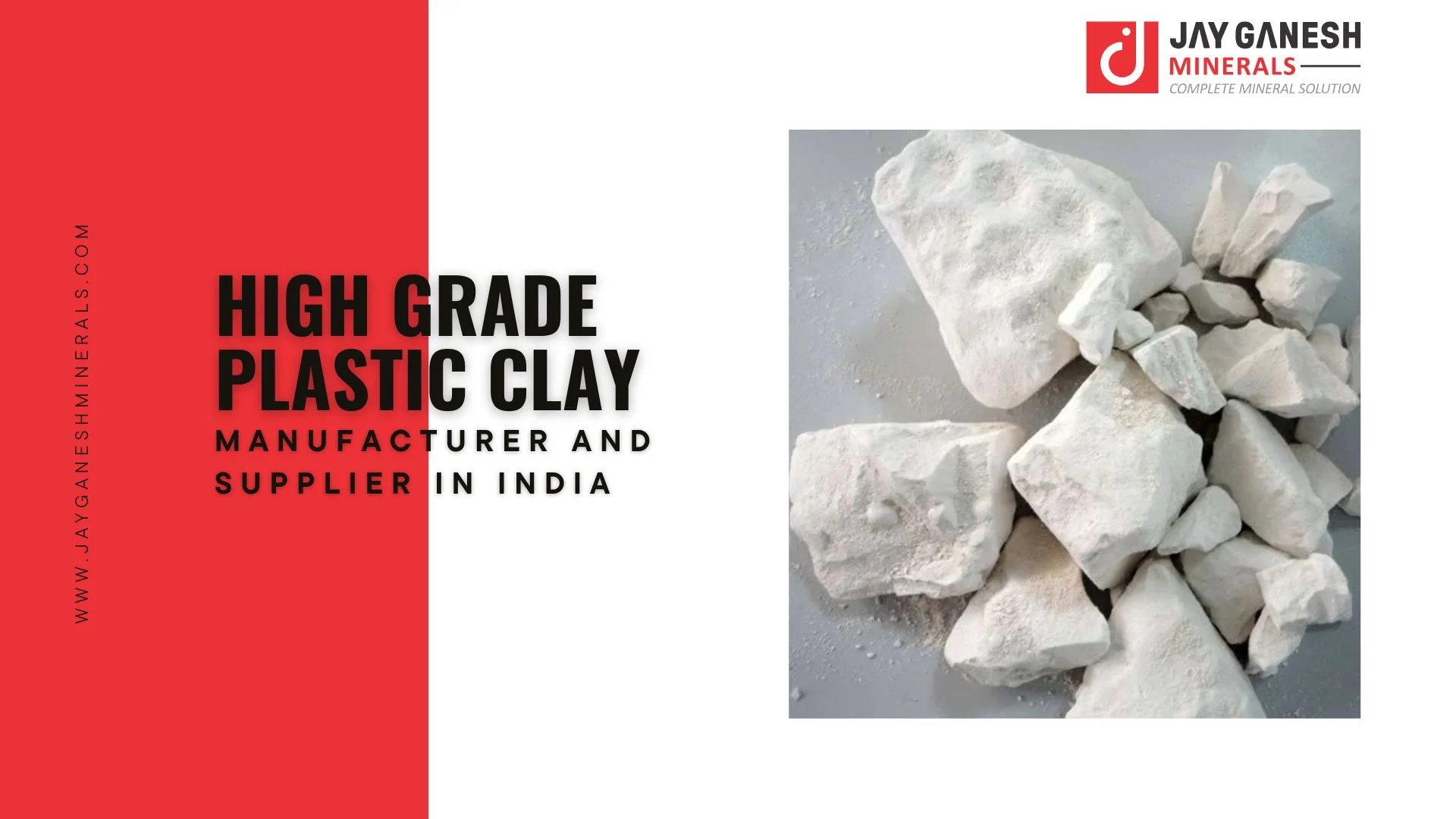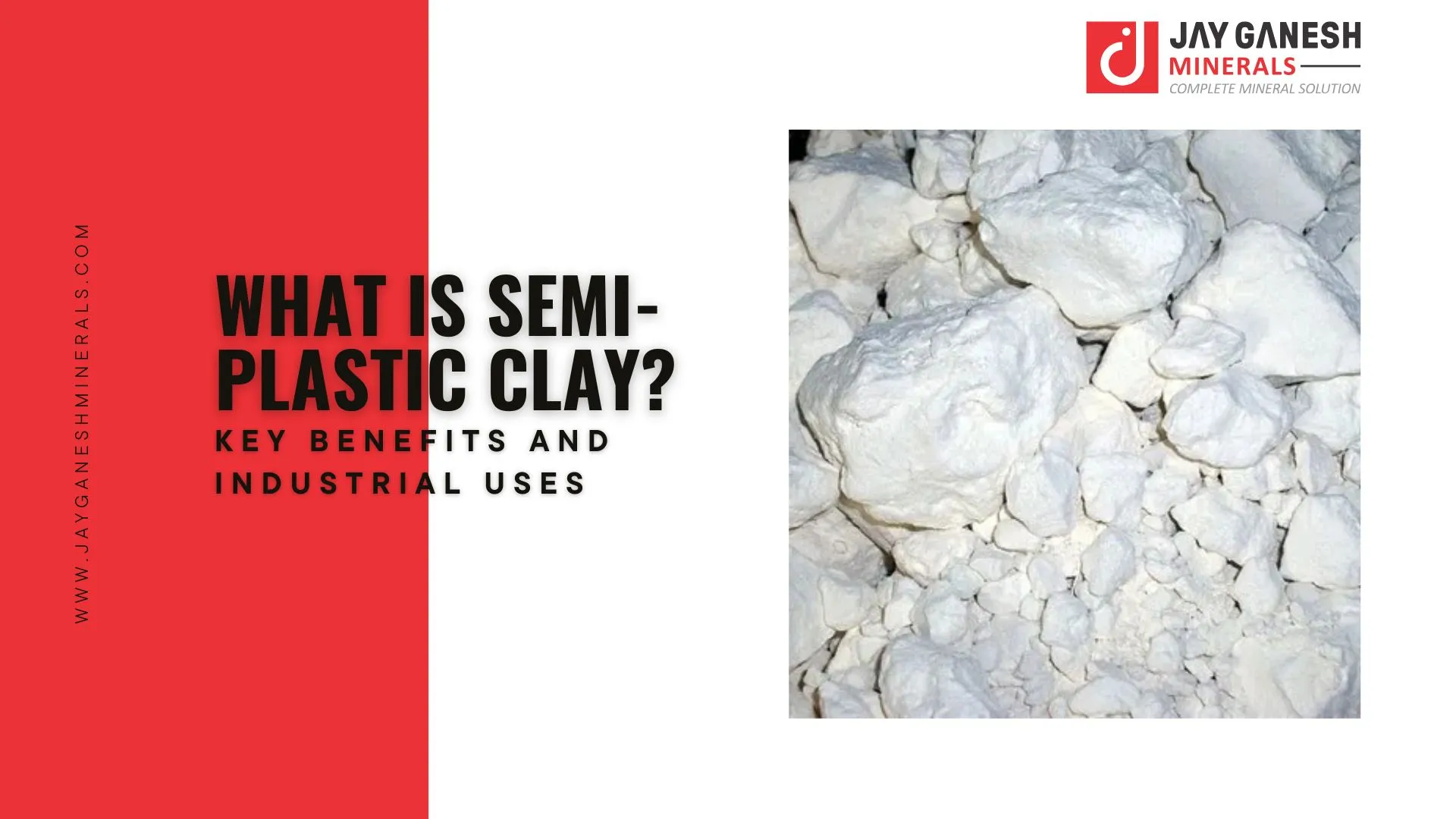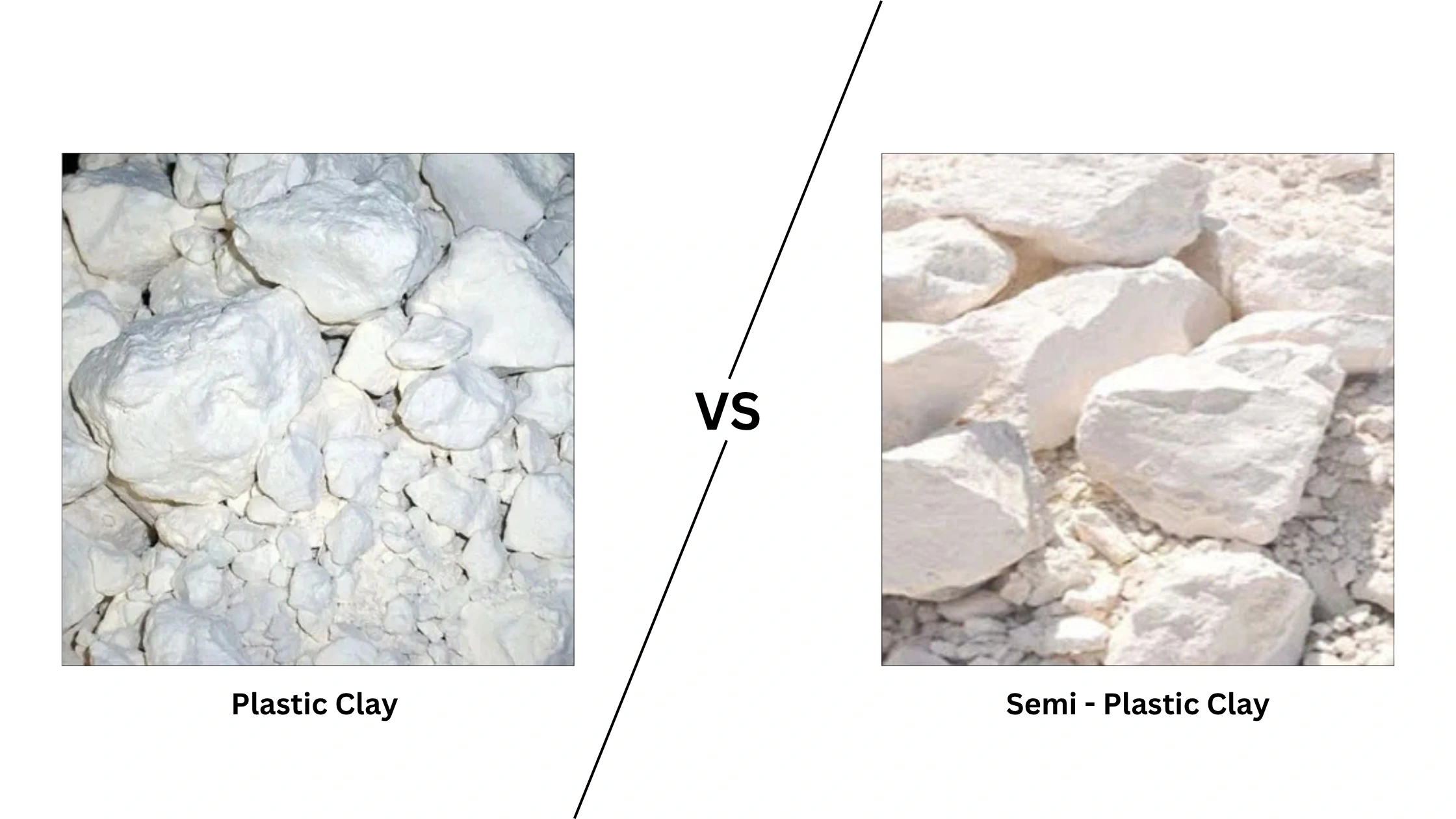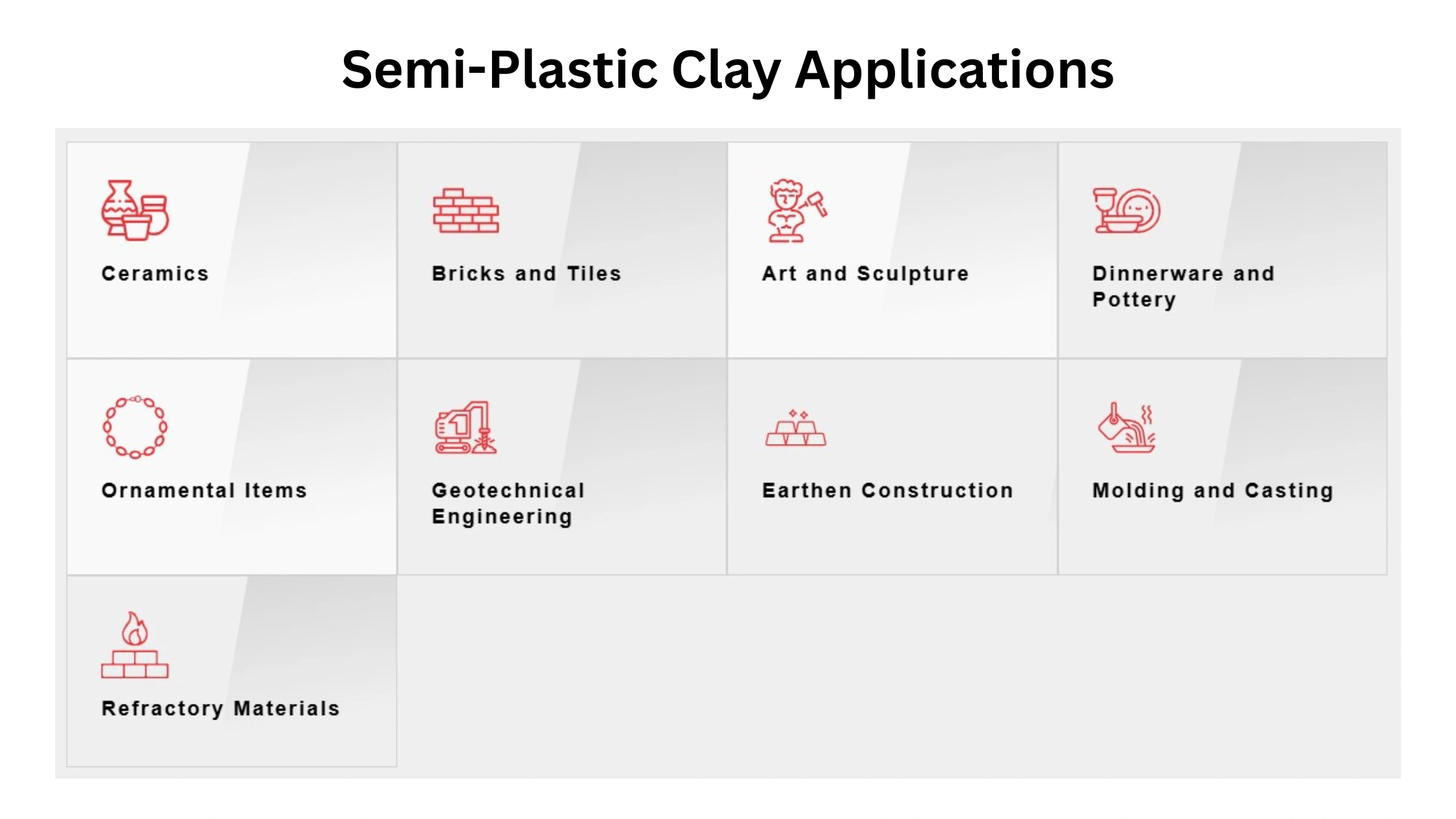
How to Check Coal Calorific Value Before Buying
09 October, 2025
10 June, 2025
In the world of ceramics, pottery, and industrial manufacturing, not all clays are created equal. Based on what they are used for, plastic clay and semi-plastic clay are chosen because of their unique features and workability. Regardless of your profession, choosing the right type of clay is very important, so it’s necessary to know the key differences between them.
Plastic Clay is a reference to its extremely plastic properties. It becomes easy to shape or mold when it is wet and will not crack. The material is plastic because its very small grains and high water-absorbing ability prevent it from crumbling when shaped.

Semi-Plastic Clay is clay that can be considered neither plastic nor non-plastic. It can be shaped, but not as freely and strongly as fully plastic clay. Since ceramic clay is mostly used for strength, it is often applied where smooth and elaborate details aren’t needed.


Plastic Clay:
Semi-Plastic Clay:
Plastic Clay:
Semi-Plastic Clay:
Plastic Clay:
Semi-Plastic Clay:
Plastic Clay:
Semi-Plastic Clay:
Plastic Clay:
Semi-Plastic Clay:


Understanding the difference between plastic clay and semi-plastic clay is essential for choosing the right material in ceramics, refractories, or industrial applications. While plastic clay offers superior workability and moldability, semi-plastic clay provides a balanced composition that supports structural strength and ease of processing. Each type has its own strengths, making it important to align your material choice with specific project requirements.
At Jay Ganesh Minerals, we pride ourselves on delivering high-quality clay minerals tailored to your industrial needs. Whether you're seeking the flexibility of plastic clay or the balanced properties of semi-plastic clay, our expertise ensures the right solution for your applications.

Whatsapp Chatx
Hi! Click one of our representatives below to chat on WhatsApp or send us email to [email protected]

|
Mr. RAJESH +91 99130 87000 |

|
Mr. JIGNESH +91 89800 70055 |

